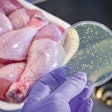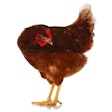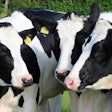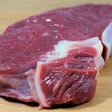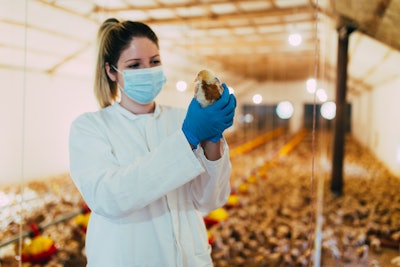
Tracking and monitoring the effectiveness of different coccidiosis control methods in poultry can boost their effectiveness in the future.
“By collecting data and actually analyzing and looking at what your performance actually turned out to be on a particular program, you’ve got solid facts behind you instead of going off a gut feel,” said Francene Van Sambeek, DVM, Elanco technical consultant.
Coccidiosis is caused by protozoan parasites called coccidia that belong to the Eimeria genus. The disease is one of the most common causes of intestinal wall damage in poultry.
Van Sambeek shared how coccidiosis control in poultry is changing, based on the differences in the global Health Tracking System between 2016-2020 and 2021-2023.
Weak chemical use is up
An increase in weak chemical use to control coccidiosis in poultry surprised Van Sambeek.
“Weak chemicals are not ionophores, but they’re also not what we consider a strong chemical that’s going to shut down all the coccidial cycling,” Van Sambeek explained.
In the earlier assessment, only one program indicated that they were using weak chemicals to control coccidiosis. By 2022, that number jumped to 30.
Part of this change is likely due to the growth of no-antibiotic-ever growing systems. However, Van Sambeek noted that the increase was also seen in no antibiotics important for human medicine (NAIHM) programs as well.
Bioshuttle programs are in
“The other big kind of aha moment was just how dramatically the use of bioshuttles has increased,” said Van Sambeek.
Bioshuttle programs against coccidiosis combine vaccines with the feeding of ionophores or chemicals.
In 2016, 55 programs used bioshuttles. That number doubled to 98 in 2022.
Initially, it was popular to vaccinate in the hatchery as the sole approach against coccidiosis. Now, there is more of a movement towards a combined approach that uses both vaccines and in feed anticoccidials for better coccidial control.







